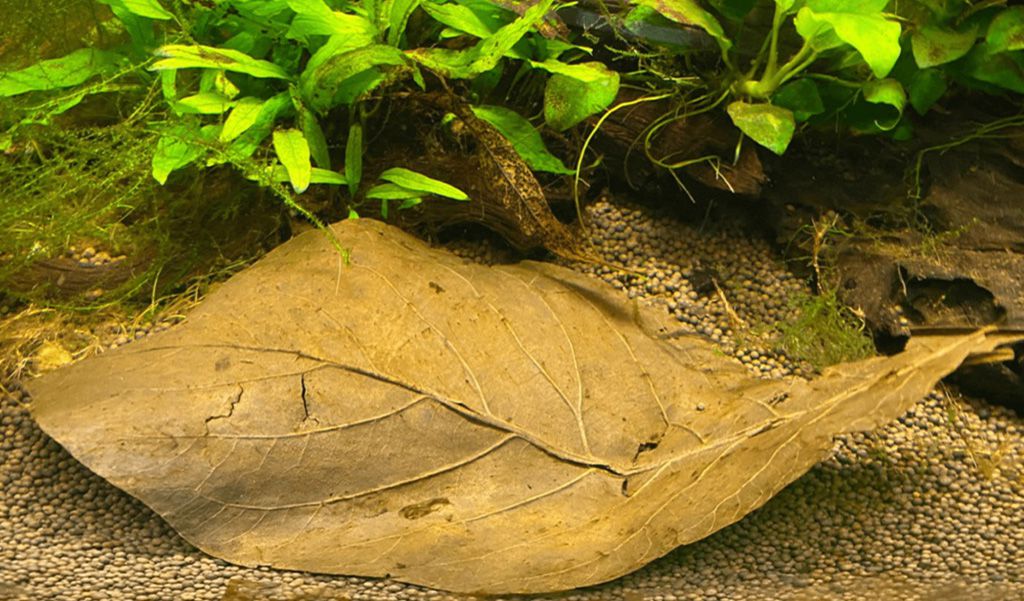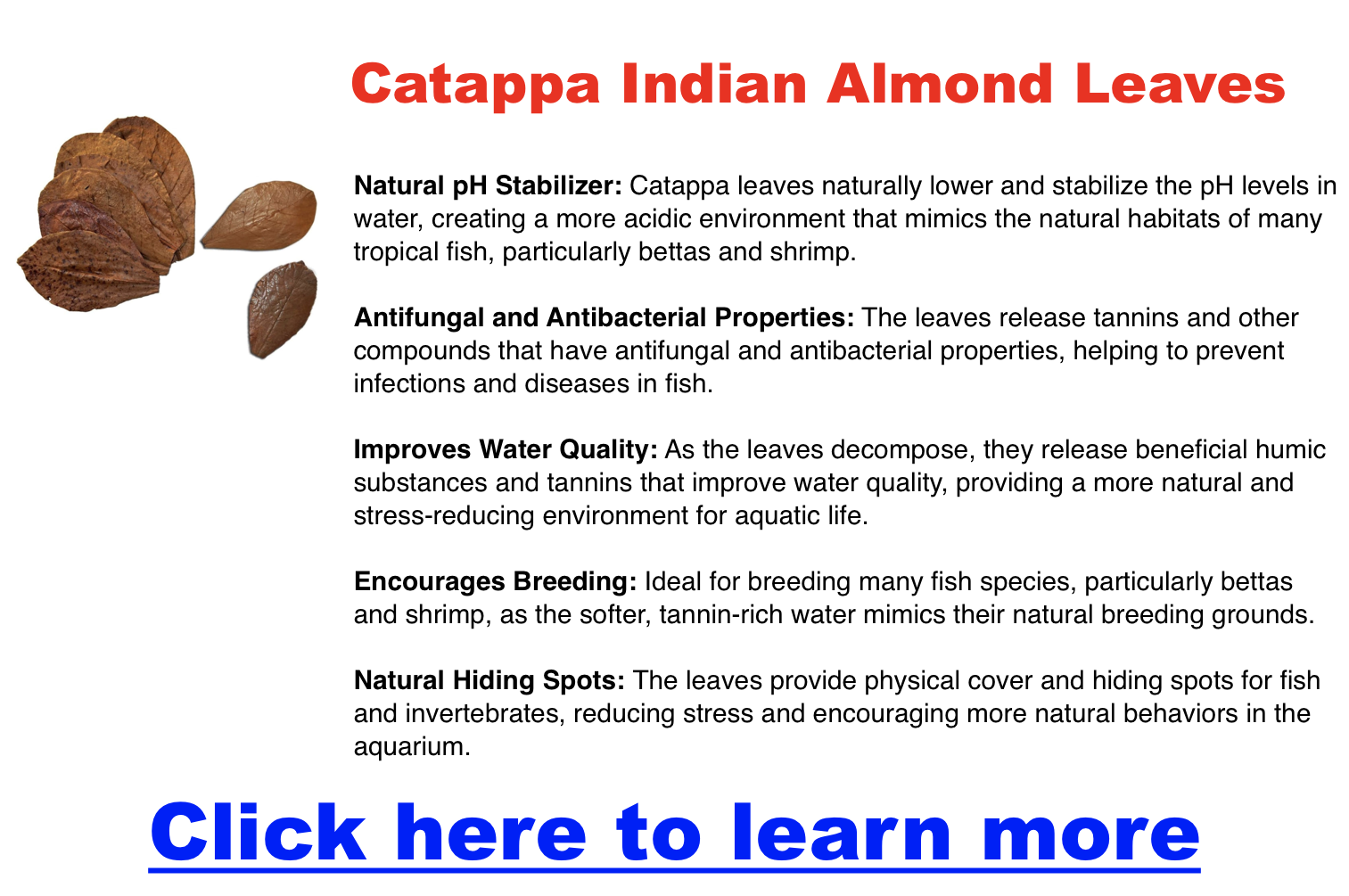How Long do Catappa/Indian Almond Leaves last in Your Aquarium?
Catappa, also known as Indian Almond Leaves, has gained popularity among aquarium enthusiasts for their remarkable benefits such as lowering pH. These leaves, derived from the Terminalia catappa tree, are not just admired for their aesthetic appeal, but also for the multitude of advantages they offer to the aquatic environment. This article delves into the heart of a commonly asked question: how long do these leaves last in your aquarium? Generally, it lasts one or two months, but this article will also explore various aspects of Catappa leaves usage, their benefits, and factors affecting their longevity.
Methods of Using Catappa Leaves
There are two primary ways to utilize Catappa leaves in your aquarium. The most straightforward method is directly placing the leaves into the tank. This approach allows the leaves to slowly release tannins, beneficial chemicals that replicate the natural habitat of many fish species. Another method involves creating a concentrated extract from the leaves, which can be added to the water to achieve similar effects without the leaves physically being present. Both methods have unique benefits, depending on the desired outcome and the aesthetics of the tank.
Why Use Indian Almond Leaves?
Click Here to learn how to reduce water changes by 70-80% by growing a specific plant…
The allure of Catappa leaves stems from the tannins and other beneficial chemicals they release. These substances not only lower the pH of the water (keeping it between 6.8-7.5 is ideal), making it more akin to the natural environments of certain fish species, but also possess antifungal and antibacterial properties, enhancing the overall health of the aquarium. Additionally, the naturalistic appearance and the decomposing leaves provide extra food sources for fish and shrimp, creating a dynamic ecosystem within the tank.
What Fish Benefit from Catappa Leaves?
Catappa leaves are particularly beneficial for a variety of fish species. Notably, betta fish, angelfish, corydoras, Apistogramma, and various shrimp species thrive in environments enriched with these leaves. The tannins released by the leaves mimic the conditions of their natural habitats, promoting health and vitality among these aquatic creatures.
Why Leave Catappa Leaves in Your Tank?
After the initial release of tannins, you might wonder whether to remove the leaves from the tank. However, there are compelling reasons to leave them in. Decomposing Catappa leaves continue to serve as a micro-habitat, offering shelter, breeding grounds, and a source of food. This contributes to creating a balanced and natural ecosystem within the aquarium.
Fish that Eat Catappa Leaves
Beyond providing environmental benefits, Catappa leaves also offer nutritional value. Plant-eating fish and shrimp find these leaves, especially as they decay, a good source of nutrients and fibers. Moreover, the leaves attract algae and microorganisms, offering a banquet for the aquarium’s inhabitants and contributing to a healthy, balanced diet.
The Quality of Your Catappa Leaves
Not all Catappa leaves are created equal. The quality of the leaves can significantly impact the water quality, their durability, and the overall benefits they provide. High-quality leaves tend to last longer and release more beneficial substances, making it crucial to source your leaves from reputable suppliers.
Products You Need for Wild Bettas
For those passionate about keeping wild bettas, incorporating Indian almond leaves into your aquarium is just the beginning. To support the health and well-beingwell-being of these magnificent fish, consider incorporating quality betta food, a sponge filter, and live floating plants and ensuring they have a spacious 5-gallon tank at minimum. These elements, combined with the natural benefits of Catappa leaves, create an ideal habitat for wild bettas to thrive.
The longevity of Catappa (Indian Almond) leaves in an aquarium is influenced by several factors, including the leaf’s size, the tank conditions, and how the leaf is prepared before being introduced to the aquarium. Generally, a Catappa leaf lasts 2 to 4 weeks before fully decomposing. However, this duration can vary. Larger leaves, for instance, may persist longer due to their size and thickness, while leaves in tanks with higher flow or more active inhabitants may break down more quickly.
Extending the Life of Catappa Leaves
While the natural decomposition of Catappa leaves is beneficial for the aquarium, providing continuous release of tannins and creating a natural environment, there are ways to extend their life slightly:
- Pre-soaking: Before adding the leaves to your tank, pre-soaking them in water for a few days can help remove some of the initial tannins and might slightly slow down the decomposition rate once they are in the aquarium. This can also reduce the initial impact on your water’s color and pH levels.
- Reducing Water Movement: In aquariums with strong water movement or filtration, leaves may break down faster due to the increased agitation. Reducing the flow near where the leaves are placed can help to extend their life.
- Leaf Placement: Positioning the leaves in areas of the tank where they are less disturbed by fish or water flow can also help to prolong their presence. Some aquarists place leaves in quieter sections of the tank or create designated areas where leaves can accumulate without being constantly moved or picked at by fish.
- Using Mesh Bags: Another method to extend the life of the leaves is to place them inside mesh bags. This can prevent the leaves from being broken apart by fish and allows for easy removal once fully decomposed. However, this might also limit fish and shrimp’s direct benefits from interacting with the leaves.
- Choosing High-Quality Leaves: Higher-quality leaves might release beneficial tannins more consistently and have longer structural integrity in the water. Opting for premium, organically sourced Catappa leaves can ensure you get the most out of their use in your aquarium.
- Partial Replacements: Instead of replacing all the leaves at once when they decompose, consider partially replacing them. This way, you maintain a consistent level of tannins in the water while extending the overall period of leaves in the tank.
While the natural breakdown of Catappa leaves is part of their appeal, understanding how to extend their useful life can help aquarists maximize their benefits. By adopting methods such as pre-soaking, adjusting water flow, and careful placement, the leaves can offer a prolonged source of tannins, shelter, and food for the inhabitants of your aquarium.



